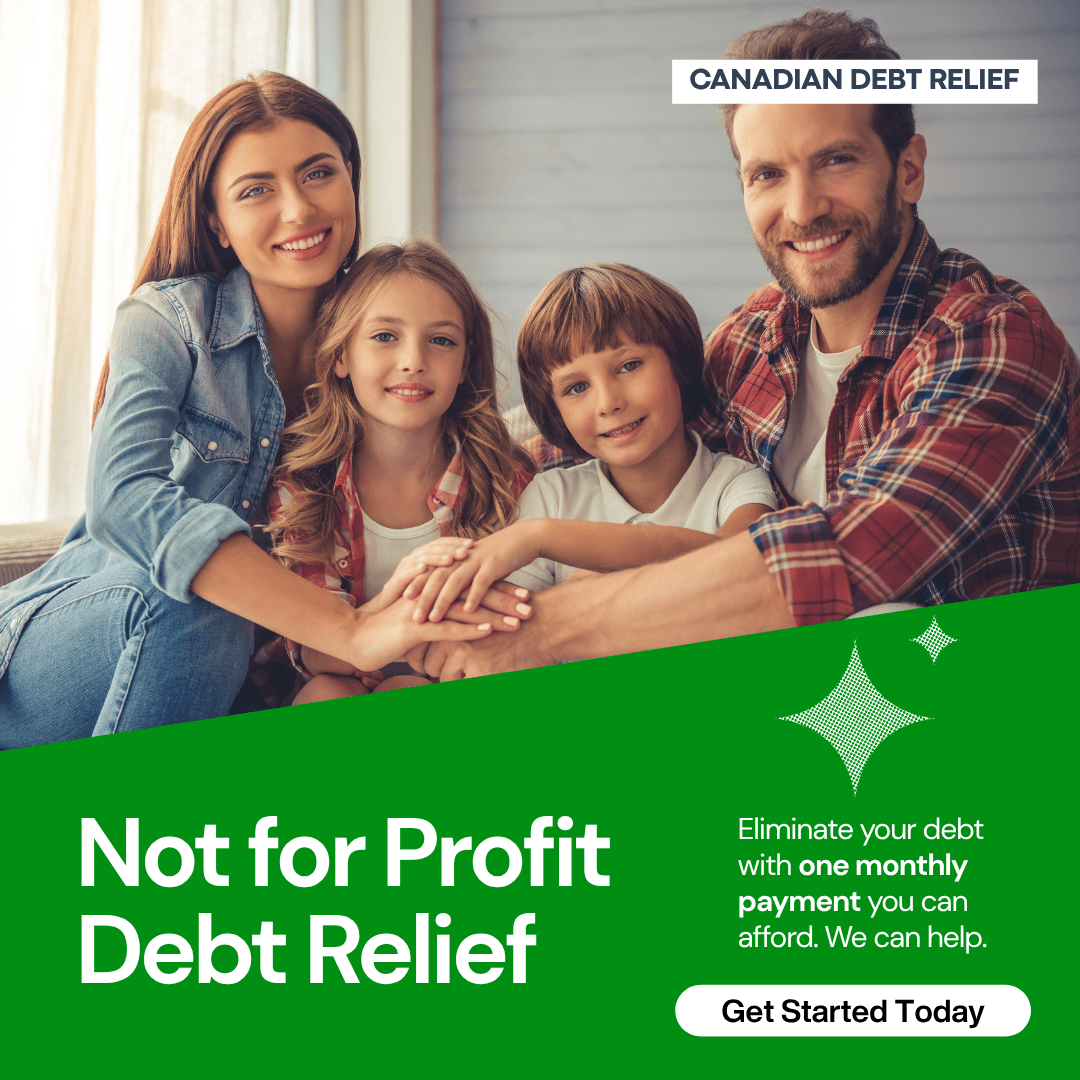Feeling overwhelmed by debt is common. Debt consolidation programs can help reduce what you owe. This guide shows how to lower your payments and find financial freedom. Keep reading to learn more.
Key Takeaways
- Debt consolidation turns many debts into one, often with lower interest rates. This makes payments easier and can save money.
- There are different ways to consolidate debt, like loans from banks or programs from non-profits. Each has its pros and cons.
- To successfully manage debt, know your total debt, create a budget, choose the best plan for you, and avoid taking on more debt in the future.
- Keeping up with payments is key to avoiding further financial trouble when using debt consolidation programs.
- Government-approved options offer support for those looking to reduce their debts safely.
What is Debt Consolidation?
Debt consolidation is a way to combine multiple debts into one. This can help make payments easier and possibly lower your interest rates.
Definition
Debt consolidation means combining multiple debts into one monthly payment. It helps make paying off debt easier for many Canadians. This process can lower borrowing costs by offering a new loan with a lower interest rate.
Many people use this to pay off high-interest debts, like credit card balances.
Using a single payment plan simplifies debt management and can save money over time. Some options include debt consolidation loans or government-approved programs. These approaches can lead to financial freedom when managed well, but it’s crucial to keep up with payments to avoid more trouble later on.
Consolidation involves using a new loan, credit card, or payment plan to pay off existing debts.
Types of debts that can be consolidated
You can consolidate many types of debt. High-interest debts like credit card balances are common targets. These can be rolled into a single monthly payment with a lower interest rate.
This process makes it easier to manage payments and may save you money in the long run. Other debts such as personal loans, medical bills, or unpaid bills also qualify for consolidation.
Government-approved programs and banks like RBC offer options for Canadians looking to simplify their finances. Using debt relief strategies helps individuals reach financial wellness faster.
Consolidating loans can lead to better management of your overall debt situation while improving your credit score over time.
Types of Debt Consolidation
Debt consolidation can take many forms. Each type offers different ways to manage your payments and lower interest rates.
Debt Consolidation Loans
Debt consolidation loans help people combine multiple debts into one monthly payment. These loans often come with lower interest rates. This can reduce borrowing costs and save money over time.
By using a debt consolidation loan, Canadians can pay off high-interest debts like credit card balances more easily.
Banks, such as RBC, offer these loans to assist individuals in managing their debts. Using this option simplifies repayments and may improve your credit score. It is essential to keep up with the repayment plan to avoid further financial issues.
Government-approved programs are also available for those needing extra help with debt repayment.
Non-profit Debt Management Programs
Non-profit Debt Management Programs help Canadians manage their debts. These programs can roll multiple debts into a single monthly payment. They often offer lower interest rates, making it easier to pay off high-interest debts like credit card balances.
Many of these programs are government-approved and provide guidance on budgeting and financial counseling.
By working with these programs, you may also avoid bad credit consolidation issues. Non-profit organizations work directly with creditors to create manageable repayment plans. This support can lead to better money management and potential credit score improvement over time.
Debt Settlement Programs
Debt Settlement Programs help people lower their total debt. They work by negotiating with creditors to reduce what you owe. This can make it easier to pay off debts. You usually pay a single monthly payment instead of many bills.
These programs often target high-interest debts like credit card balances.
Using a Debt Settlement Program may lead to forgiveness on some credit card debt. Many Canadians explore these options for financial independence. However, it’s wise to be careful and understand the risks involved.
Keep in mind that missing payments may worsen your financial situation. Always check government-approved programs when considering your choices for managing debt effectively.
Consumer Proposals
A consumer proposal is a way for Canadians to manage their debt. It allows people to make an offer to pay back only part of what they owe. This can help reduce monthly payments and total debt amounts.
Consumer proposals are set up through licensed professionals called trustees.
This option works best for those with more than $1,000 in unsecured debts. Many Canadians use this method instead of filing for bankruptcy. It offers legal protection from creditors while helping individuals regain control over their finances.
Creditors may accept the proposal as it can save them money compared to going through bankruptcy options.
Pros and Cons of Debt Consolidation Programs
Debt consolidation programs have both good and bad sides. They can help you manage your payments better but may also come with risks. Read on to learn more about these pros and cons!
Advantages
Debt consolidation can lower your monthly payments. It combines multiple debts into one payment. This makes managing finances easier. A consolidation loan often offers a lower interest rate.
That means you may save money over time, especially on high-interest debts like credit card balances.
Programs from the Canadian government can help with repayment as well. Many banks, such as RBC, provide debt consolidation loans to assist individuals in need. These options support reducing debt and achieving financial freedom without overwhelming stress from multiple bills every month.
Disadvantages and Risks
Debt consolidation programs can have drawbacks. Some people may take on new debt while trying to pay off old debts. This can lead to more financial trouble instead of relief. High fees often come with certain types of consolidation programs, like debt settlement programs.
These fees might make it harder to reduce debt in the long run.
Another risk is that consolidating loans can lower your credit score if you miss payments or add more debt afterwards. Keeping up with payments is very important. Falling behind could worsen your situation and lead to more stress.
People should also be cautious about trusting companies that promise quick fixes for their debts. Seeking help from government-approved programs and credit counseling services is a better option for managing finances safely and wisely.
How to Successfully Consolidate Your Debt
Start by knowing your debt and making a budget. Pick the right plan for your needs. Work closely with creditors and banks. Combine your debts into one payment. Keep managing your money to avoid more debt later on.
For more tips, keep reading!
Understanding your debt and creating a budget
Understanding your debt is the first step to financial freedom. Creating a budget helps you manage your money better.
- List all debts: Write down every debt you have. Include credit card balances, loans, and any other payments. This gives you a clear view of what you owe.
- Know interest rates: Check each debt’s interest rate. High-interest debts, like credit cards, can cost more over time. Focus on these first when thinking about consolidation.
- Calculate total debt: Add up all your debts. Knowing the total helps you see the bigger picture and plan steps for reduction.
- Create a monthly budget: Track your income and expenses each month. List all sources of income and necessary costs like rent or groceries. This shows how much money you can put toward your debts.
- Set a repayment goal: Decide how much extra money you can use to pay off debts each month. Aim for a specific date to improve your overall financial health faster.
- Choose a consolidation method: Look at options like loan consolidation or non-profit debt management programs to simplify payments. Government-approved programs may also help reduce costs effectively.
- Communicate with creditors: Contact lenders to discuss repayment plans if needed. Some may offer lower rates or payment relief options that can ease your financial burden.
- Monitor spending habits: Keep track of where your money goes after making a budget plan. Avoid unnecessary purchases that could lead back into debt.
- Review financial goals regularly: Check in on how you’re doing with your budget monthly or quarterly. Adjust as needed based on life changes or new expenses.
- Seek professional help if needed: Don’t hesitate to contact financial advisors if you’re feeling lost about managing debt or budgeting effectively.
Focusing on understanding your debt will guide you towards choosing the right strategy next.
Choosing the right strategy
After creating a budget and understanding your debt, it is time to choose the right strategy. Several options can help you reduce debt in Canada. You might consider a debt consolidation loan from banks like RBC.
This option can lower your interest rates on high-interest debts such as credit cards. Non-profit Debt Management Programs are also available; they simplify payments and make it easier to manage your debts.
Debt Settlement Programs may work for some individuals but carry risks that need careful thought. Consumer proposals involve negotiating with creditors to pay less than what you owe.
Each choice has its benefits and drawbacks, so weigh them carefully before deciding on the best path to financial freedom.
Working with creditors and financial institutions
Working with creditors and financial institutions can help you manage your debts. Start by contacting them directly. Let them know about your situation. Many lenders, like RBC, offer debt consolidation loans to help individuals reduce their debt.
These loans may help pay off high-interest credit card balances.
You can also explore government-approved programs for debt repayment. Many of these programs aim to ease your financial burden and provide support. Keeping open lines of communication with creditors is vital.
It helps in negotiating lower payments or interest rates while working towards achieving financial freedom through effective debt reduction strategies.
Consolidating debts
After reaching out to creditors and financial institutions, the next step is consolidating debts. This process can simplify your payments and help manage financial stress.
- Choose a New Loan: Look for a loan that combines all your debts into one payment. A debt consolidation loan can pay off high-interest debts like credit card balances. This often leads to a lower interest rate.
- Consider Credit Card Consolidation: Some people use a credit card with a low interest rate to pay off other cards. This can lower the overall interest you pay.
- Explore Non-profit Debt Management Programs: These programs help you combine your debts through financial counseling. They negotiate with creditors on your behalf and create a repayment plan that fits your budget.
- Research Debt Settlement Programs: This option allows you to settle debts for less than what you owe. It works best if you’re struggling financially and can make some payments quickly.
- Look Into Consumer Proposals: A consumer proposal is an offer made to creditors to pay back part of your debt over time. This option often has more favorable terms than filing for bankruptcy.
- Keep Track of Payments: Once you’ve consolidated, make sure to keep up with the new payment plan. Missing payments can lead to more financial trouble down the line.
- Avoid Future Debt: After consolidating, focus on managing your money wisely. Create a budget and stick to it, so you do not fall back into debt again.
- Check Government-approved Programs: The Canadian government offers grants and loans for debt repayment and consolidation programs aimed at helping citizens regain control of their finances.
- Engage with Banks like RBC: Large banks have specific loans designed for effective debt management in Canada. They provide options tailored to various financial situations.
- Seek Out Credit Card Debt Forgiveness Options: If debts are overwhelming, look for solutions that allow forgiveness of part of the balance owed on credit cards through various consumer initiatives or non-profit organizations.
Managing and avoiding future debt
Consolidating debts is just the first step. Managing and avoiding future debt is key for financial freedom.
- Track your expenses. Write down every dollar you spend. This helps you see where your money goes. Create a budget that works for you. Stick to it as much as possible.
- Build an emergency fund. Aim to save three to six months’ worth of living costs. This money will help if unexpected bills come up, keeping you out of debt.
- Avoid unnecessary credit card use. Only use credit cards for planned purchases or in emergencies. Paying them off each month helps avoid high-interest charges.
- Look for government-approved programs available in Canada for debt repayment and consolidation loans. They can provide support when needed, reducing stress over debts.
- Educate yourself about interest rates and fees on loans and credit cards before signing up for anything new. Understanding these costs helps you make better choices.
- Communicate with creditors if you struggle to make payments on time. Many lenders offer support or payment plans to help manage your debt.
- Consider professional advice from non-profit Debt Management Programs if debts become overwhelming. They assist with budgeting and finding the right strategies for repayment.
- Set realistic financial goals, such as paying off one loan at a time or saving a specific amount each month. Achieving these goals gives motivation and keeps debt from piling up again.
- Review your budget regularly and adjust it based on changes in income or expenses, ensuring it remains effective at managing your finances.
- Use consolidation loans wisely to pay off high-interest debts like credit card balances while keeping new spending low, which makes it easier to reach financial freedom over time.
Conclusion
Debt consolidation can be a smart move for many Canadians. It helps turn multiple debts into one easy payment. This can save you money and reduce stress. With the right plan, you can work toward financial freedom.
Take charge of your debt today!
FAQs
1. What is “The Ultimate Guide to Debt Consolidation Programs: How to Reduce Debt and Achieve Financial Freedom”?
“The Ultimate Guide to Debt Consolidation Programs: How to Reduce Debt and Achieve Financial Freedom” is a comprehensive guide that helps people understand how debt consolidation programs work, including government-approved ones, with the aim of reducing debt and attaining financial freedom.
2. Can government-approved programs help me reduce my debt?
Yes, government-approved programs can be very helpful in managing your debts as they are designed with regulations that protect consumers while providing them ways towards financial freedom.
3. How does “The Ultimate Guide to Debt Consolidation Programs: How to Reduce Debt and Achieve Financial Freedom” assist me in achieving financial freedom?
This guide provides detailed information on various strategies for consolidating debts, including using government-approved programs. It offers advice on how these methods can lead you towards a path of reduced debt and ultimately, financial independence.
4. Are all the solutions provided by “The Ultimate Guide to Debt Consolidation Programs: How to Reduce Debt and Achieve Financial Freedom” approved by the Government?
Not all solutions may be government-endorsed but the guide includes several options which are part of official schemes or initiatives aimed at helping citizens manage their debts effectively.









